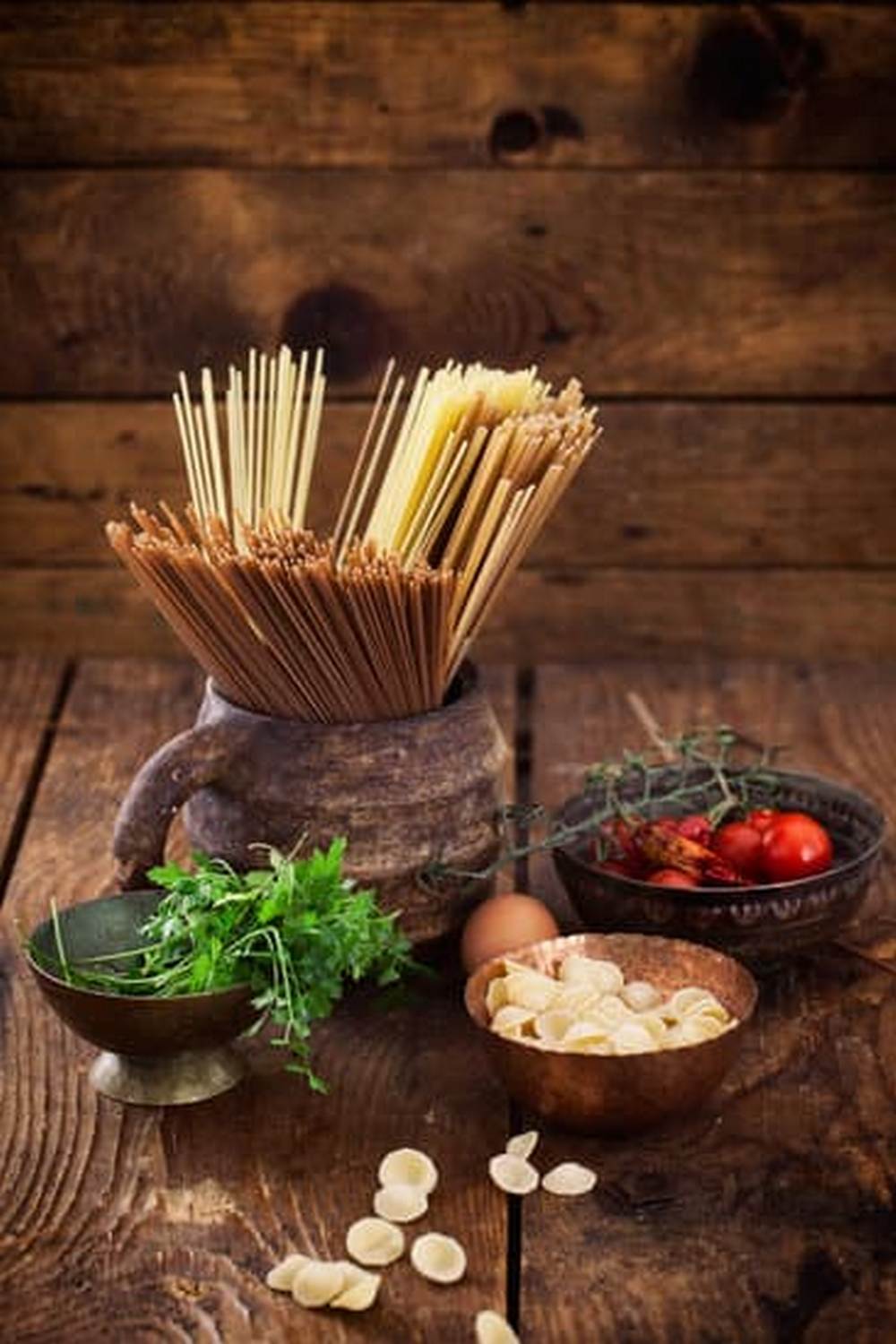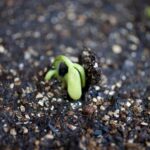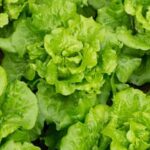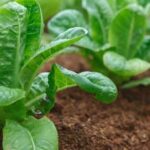Have you ever considered the potential of mixing different vegetables in one gardening pot? This article will explore the benefits of creating a diverse and thriving container garden filled with a variety of vegetables. By combining different vegetables in one pot, you can make the most efficient use of your space while enjoying a bountiful harvest.
When it comes to choosing the right vegetables for mixing, understanding complementary growth patterns and nutrition needs is crucial. We will discuss how to select the perfect combination of vegetables that will thrive together in a single container, providing each other with essential nutrients and creating an aesthetically pleasing arrangement.
In addition to vegetable selection, we will also delve into container selection and preparation. Finding the perfect pot and ensuring proper drainage are essential for creating an ideal growing environment for mixed vegetables. With the right soil, fertilizer, and planting techniques, you can maximize space and sunlight for each variety, ultimately leading to a successful and flourishing container garden.
Choosing the Right Vegetables for Mixing
When it comes to mixing different vegetables in one gardening pot, choosing the right vegetables is crucial for a successful and thriving container garden. Understanding the complementary growth patterns and nutrition needs of each vegetable is essential in creating a harmonious and productive environment for your plants.
To start, consider the size of the mature plant as well as its growth habit. Larger plants like tomatoes or peppers may overshadow smaller plants such as lettuce or herbs, so it’s important to choose a combination that will allow each vegetable to receive adequate sunlight and space for optimal growth. Additionally, understanding the nutrition needs of each vegetable is vital for avoiding competition for essential nutrients in the soil.
Another key consideration when choosing vegetables for mixing in one gardening pot is selecting varieties that have similar water and sunlight requirements. For example, grouping together vegetables that thrive in full sun with those that prefer partial shade can result in suboptimal growth for some plants. It’s important to research the specific needs of each vegetable and select varieties that are compatible with one another.
Lastly, consider the potential benefits of companion planting when choosing vegetables for mixing in a gardening pot. Some combinations of vegetables can provide natural pest control or improve soil quality through their interactions with one another.
| Vegetable Combination | Benefits |
|---|---|
| Tomatoes and Basil | Basil repels pests that commonly affect tomatoes |
| Lettuce and Carrots | Lettuce provides shade and moisture retention for carrots |
| Cucumbers and Peas | Cucumber vines provide ground cover while peas fix nitrogen in the soil |
Container Selection and Preparation
When it comes to mixing different vegetables in one gardening pot, choosing the right container is crucial to the success of your garden. The size and material of the pot can greatly impact the growth and health of your mixed vegetable plants.
When selecting a container, it’s important to consider the mature size of each vegetable plant, as well as their root systems. Look for a pot that provides enough space for all the vegetables to grow without overcrowding each other.
In addition to size, proper drainage is essential for a mixed vegetable container garden. Without adequate drainage, excess water can accumulate in the soil, leading to root rot and other issues. When preparing your chosen pot for planting, make sure it has drainage holes at the bottom. If your pot does not have drainage holes, you can create them yourself using a drill or hammer and nail.
To ensure proper drainage, place a layer of small rocks or pebbles at the bottom of the pot before adding soil. This will help prevent soil from becoming waterlogged and improve overall root health for your mixed vegetable plants. By taking the time to carefully select and prepare your container, you will create an ideal growing environment for mixing different vegetables in one gardening pot.
In summary, choosing the right container and ensuring proper drainage are key components of successfully mixing different vegetables in one gardening pot. By considering the size and material of the pot, as well as implementing proper drainage techniques, you can create an optimal growing environment for your mixed vegetable plants. With careful planning and preparation, you can enjoy a bountiful harvest of fresh and nutritious vegetables grown in a single container.
Soil and Fertilizer Tips
When it comes to mixing different vegetables in one gardening pot, creating the ideal growing environment is essential for the success of your container garden. The first step in this process is to ensure that you have the right soil and fertilizer for your mixed vegetables.
One important consideration when selecting soil for a mixed vegetable container garden is its ability to retain moisture while also providing good drainage. A high-quality potting mix that is specifically formulated for container gardening can be a great option, as it will typically contain a balance of organic matter, perlite, vermiculite, and other materials that promote both water retention and drainage. Additionally, adding some compost to your potting mix can help provide essential nutrients to your mixed vegetables.
In terms of fertilizer, slow-release granular fertilizers are a convenient option for container gardens, as they only need to be applied every few months. Look for a balanced formula (such as 10-10-10) that provides equal amounts of nitrogen, phosphorus, and potassium – essential nutrients for healthy plant growth. It’s important not to over-fertilize your mixed vegetable container garden, as this can lead to excessive foliage growth at the expense of fruit production.
When creating the ideal growing environment for mixing different vegetables in one gardening pot, it’s crucial to strike a balance between providing sufficient nutrients without overwhelming your plants with synthetic fertilizers. By choosing the right soil and fertilizer and maintaining proper nutrient levels throughout the growing season, you can set yourself up for success in cultivating a thriving mixed vegetable container garden.
| Soil and Fertilizer Tips | Mixed Vegetable Container Garden |
|---|---|
| Choose high-quality potting mix formulated for containers | Ensure good drainage while retaining moisture |
| Add compost to provide essential nutrients | Slow-release granular fertilizers are convenient option |
| Use balanced formula (e.g. 10-10-10) | Avoid over-fertilizing and maintain proper nutrient levels |
Planting and Arranging the Vegetables
When it comes to planting and arranging different vegetables in one gardening pot, maximizing space and sunlight for each variety is crucial for their growth and productivity. To achieve this, it is essential to carefully plan the layout of your container garden and consider the specific needs of each vegetable.
Here are some tips for planting and arranging mixed vegetables in a gardening pot:
- Consider the height of each plant: When arranging your vegetables, be mindful of their mature sizes. Taller plants should be placed at the back or center of the pot to ensure they do not shade smaller ones.
- Group by sunlight needs: Vegetables that require full sun should be placed in areas where they will receive ample sunlight, while those that thrive in partial shade can be positioned accordingly.
- Utilize vertical space: Consider using trellises or stakes to support climbing vegetables such as tomatoes, peas, or cucumbers. This will help maximize space and promote healthy growth.
By carefully planning and arranging your mixed vegetable container garden, you can ensure that each plant receives the necessary space and sunlight for optimal growth. This approach also allows you to create an aesthetically pleasing arrangement that maximizes both productivity and beauty in your garden.
Remember to regularly monitor your container garden to make any necessary adjustments as the plants grow. With proper planning and care, you can create a thriving mixed vegetable garden in a single pot.
Watering and Maintenance
Maintaining a mixed vegetable container garden involves regular watering and proper maintenance to ensure the health and nutrient balance of the various plants. Here are some tips for keeping your mixed vegetables thriving:
- Watering: Different vegetables may have varying water needs, so it’s important to monitor the moisture level of the soil regularly. Generally, vegetables in containers require more frequent watering than those in traditional gardens. Be sure to water the plants thoroughly, allowing the excess water to drain out from the bottom of the pot.
- Fertilization: Mixed vegetables in one gardening pot may compete for nutrients, so it’s crucial to provide a balanced fertilizer regimen. Consider using a slow-release organic fertilizer to maintain steady nutrition levels throughout the growing season. Additionally, supplement with liquid fertilizer every few weeks to boost plant growth and productivity.
- Weeding and Pruning: Regularly inspect your mixed vegetable container garden for weeds and remove them promptly to prevent competition for essential nutrients. In addition, prune any overgrown or diseased foliage to promote air circulation and prevent pest infestations.
In addition to these maintenance tasks, it’s important to be mindful of potential issues that could affect your mixed vegetable container garden:
- Pest Control: Keep an eye out for common pests such as aphids, caterpillars, and snails that may attack your mixed vegetables. Consider using natural remedies like neem oil or insecticidal soap to control infestations while minimizing harm to beneficial insects.
- Disease Prevention: Proper spacing between different types of vegetables can help reduce the risk of disease spread. Keep an eye out for signs of fungal or bacterial infections, such as wilting or yellowing leaves, and take appropriate action as soon as possible.
By staying proactive with watering, maintenance, pest control, and disease prevention, you can ensure that your mixed vegetable container garden remains healthy and productive throughout the growing season. With careful attention and proper care, you’ll be able to enjoy a bountiful harvest of fresh and delicious produce from your own backyard.
Common Pests and Diseases
Identifying Common Pests and Diseases
One of the main challenges when it comes to mixing different vegetables in one gardening pot is the increased risk of pests and diseases. When various types of vegetables are grown together, they can attract a wider range of pests compared to when they are planted individually. Some common pests that may target mixed vegetable gardens include aphids, caterpillars, and spider mites. Additionally, diseases such as powdery mildew and blight can also affect multiple types of vegetables at once.
Preventing Issues in a Mixed Vegetable Container Garden
To prevent pest and disease issues in a mixed vegetable container garden, it is important to take proactive measures. One effective strategy is companion planting, where certain vegetables are planted together to repel pests or attract beneficial insects. For example, planting onions or garlic alongside other vegetables can help deter pests like aphids and nematodes. Additionally, regularly inspecting the plants for any signs of infestation or disease can help detect issues early on and prevent them from spreading.
Natural Pest Control Methods
In a mixed vegetable container garden, using natural pest control methods is essential for maintaining the health of the plants. This can include introducing beneficial insects like ladybugs or lacewings that feed on harmful pests.
Another approach is using organic pesticides made from natural ingredients such as neem oil or insecticidal soap. By incorporating these methods into your gardening routine, you can effectively manage pest and disease issues without resorting to harmful chemicals that could negatively impact the growth of your mixed vegetables.
Harvesting and Enjoying the Fruits of Your Labor
Preserving Your Harvest
Once your mixed vegetable container garden has produced an abundant harvest, it’s important to have a plan for preserving the fruits of your labor. Canning, freezing, and pickling are all popular methods for preserving vegetables. However, it’s essential to follow safe food preservation guidelines to ensure that your vegetables stay fresh and delicious for the longest amount of time.
Creative Recipes for Mixed Vegetables
One of the most enjoyable aspects of growing mixed vegetables in one gardening pot is the ability to create unique and flavorful dishes using the variety of produce you’ve cultivated. Experiment with different combinations of vegetables in recipes such as stir-fries, salads, and soups. You can also try your hand at making homemade salsa, relish, or even vegetable-based sauces to enjoy with pasta or rice dishes.
Sharing Your Bounty
If your mixed vegetable container garden has yielded more produce than you can consume on your own, consider sharing your bounty with friends, family members, or even local food banks or community organizations. Not only does this allow others to enjoy the fruits of your labor, but it also fosters a sense of community and generosity within your neighborhood.
Plus, sharing your homegrown produce can be an excellent conversation starter and may inspire others to try mixing different vegetables in one gardening pot themselves.
Conclusion
In conclusion, the creative and functional potential of mixing different vegetables in one gardening pot is truly remarkable. Not only does it allow for efficient use of space, but it also promotes a diverse and balanced ecosystem within the container garden. By understanding the complementary growth patterns and nutrition needs of various vegetables, you can create a harmonious blend of flavors and textures that will thrive together.
Choosing the right container and preparing the soil are important steps in ensuring success with mixed vegetables. Proper drainage is essential for preventing waterlogged roots, while nutrient-rich soil and appropriate fertilizer application will provide the ideal growing environment for your plants. Taking the time to plan out your planting arrangement will help maximize space usage and sunlight exposure for each variety, leading to a bountiful harvest.
When it comes to maintenance, regular watering and vigilance against common pests and diseases are crucial for the health of your mixed vegetable container garden. By staying on top of care and taking preventative measures, you can enjoy a thriving garden all season long.
And when it’s time to harvest, you’ll have a delicious array of vegetables at your fingertips to enjoy fresh or in tasty recipes. Embracing the creativity and functionality of mixing different vegetables in one gardening pot opens up a world of possibilities for urban gardening enthusiasts and those with limited outdoor space.
Frequently Asked Questions
Can I Plant Different Vegetables in the Same Pot?
Yes, you can plant different vegetables in the same pot as long as they have similar sunlight, water, and soil requirements. Be mindful of the space each vegetable needs to grow properly.
Can You Put Multiple Vegetables in One Pot?
Putting multiple vegetables in one pot is possible as long as you consider the space each vegetable needs for its roots and growth. Some vegetables may compete for resources if planted too closely together.
Can You Mix Different Plants in the Same Pot?
Mixing different plants in the same pot can be done, but it requires careful planning. Consider the water, light, and soil needs of each plant to ensure they can thrive together without one overpowering the others.

If you’re looking to get into vegetable gardening, or are just looking for some tips on how to make your current garden better, then you’ve come to the right place! My name is Ethel and I have been gardening for years. In this blog, I’m going to share with you some of my best tips on how to create a successful vegetable garden.





